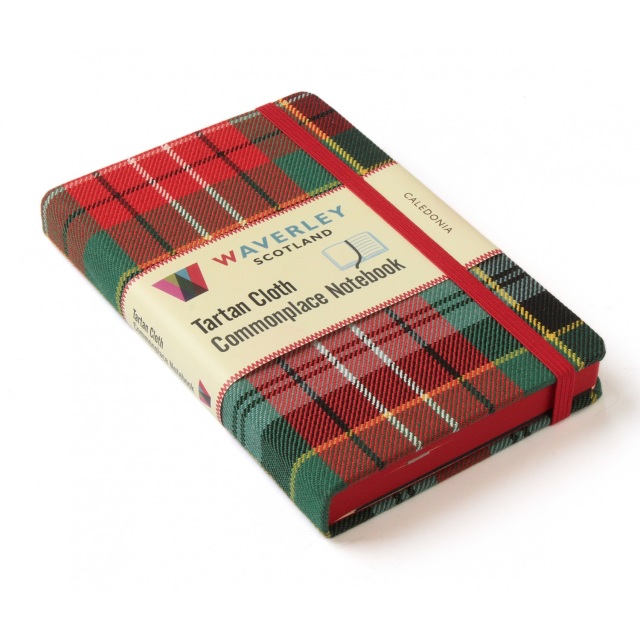- Pocket Journals
- >
- Caledonia Tartan Pocket Journal
Caledonia Tartan Pocket Journal
SKU:
4234
$16.50
$16.50
Unavailable
per item
The vibrant Caledonia tartan has a sea-green background overlaid with broad red banding, with accents of black, white and yellow.
If your surname has no connection or association with any of the existing tartans you can choose to wear the Caledonia tartan because the Caledonia is “universal”. Caledonia is the Latin name that the Romans gave to the north of Scotland. The tartan is said by some to have been designed in the 1700s, but its true origins and age are not known.
If your surname has no connection or association with any of the existing tartans you can choose to wear the Caledonia tartan because the Caledonia is “universal”. Caledonia is the Latin name that the Romans gave to the north of Scotland. The tartan is said by some to have been designed in the 1700s, but its true origins and age are not known.
The other universal tartans are the Black Watch, Stewart Hunting and Jacobite tartans. There are also commemorative tartans which celebrate a particular occasion or event, and national tartans such as the Flower of Scotland and Scotland’s National, which celebrate Scottish identity in general. In addition, there are corporate tartans and these belong to particular companies, organisations or groups of individuals.
One theory about the source of the Caledonia sett is that it was worn as a protest against the Union of the Parliaments of 1707, the Act that led to the creation of the United Kingdom of Great Britain on the 1st of May of that year. Some have described the wearing of this tartan, in plaids and silk scarves, as a way that fashionable Edinburgh ladies could show their disapproval of the Act of Union.
A “Caledonian” tartan was mentioned in the 1819 stock list of William Wilson of Bannockburn (established around 1770 near Stirling) and some writers have claimed that this is the tartan also known as William Wilson’s No.155. Others have claimed No.155 was the MacPherson tartan and some say it was named Kidd.
Whatever is the true story of its origin, this is an eye-catching and attractive universal tartan.
One theory about the source of the Caledonia sett is that it was worn as a protest against the Union of the Parliaments of 1707, the Act that led to the creation of the United Kingdom of Great Britain on the 1st of May of that year. Some have described the wearing of this tartan, in plaids and silk scarves, as a way that fashionable Edinburgh ladies could show their disapproval of the Act of Union.
A “Caledonian” tartan was mentioned in the 1819 stock list of William Wilson of Bannockburn (established around 1770 near Stirling) and some writers have claimed that this is the tartan also known as William Wilson’s No.155. Others have claimed No.155 was the MacPherson tartan and some say it was named Kidd.
Whatever is the true story of its origin, this is an eye-catching and attractive universal tartan.

